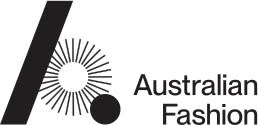The Australian Fashion Council Launches Australian Fashion Trademark

SYDNEY — The Australian Fashion Council has unveiled Australian Fashion, an industry certification trademark and campaign that is designed to drive demand for Australian brands locally and internationally.
Funded by the Australian federal government and unveiled at Sydney’s Carriageworks venue on Monday morning local time, on day one of Afterpay Australian Fashion Week’s Resort 2023 collections showcase, the multichannel campaign and consumer website will launch in Australia in August and then in the U.K. in September. The latter launch is designed to align with the implementation of the new Australia-United Kingdom Free Trade Agreement, which represents the most liberalizing agreement signed by Australia with a major trading partner, outside its longstanding pact with New Zealand.
More from WWD
Brands can apply to use the Australian Fashion certification via the Australianfashion.org website and must be able meet at least two of the following criteria: the demonstration of a contribution to jobs and the local economy; having majority Australian employees, and by being Australian-made, Australian-owned or Australian tax-domiciled.
Certified brands must also pledge to make commitments to upholding standards of both creative integrity and authenticity, as well as standards of social and environmental responsibility.
“More than a trademark, this is an opportunity to showcase the best of Australia’s fashion talent,” said Australian Fashion Council chief executive officer Leila Naja Hibri. “When Italian fashion is mentioned, we immediately visualize a distinct brand identity of quality and elegance. In a similar way, we have now identified four key pillars that distinguish Australia’s Fashion DNA: effortless style, raw nature, boundless optimism and fearless innovation. This, together with the trademark, will help us clearly articulate the unique creativity and the progressive social and environmental values of Australian fashion on the world’s fashion stage. The Australian Fashion trademark will be a driving force in building the industry’s growth trajectory to deliver substantial economic, social and environmental gains over the next 10 years.”

Alongside the trademark and campaign, the AFC unveiled a new Afterpay-sponsored report from Ernst & Young called “Fashion Evolution: From Farm to Industry,” that is modeled on four key policy asks of the next Australian government, pursuant to the results of the upcoming federal election on May 21. The AFC is asking the government to boost domestic and global demand to “Buy Australian” via the new trademark program and campaign; to build future manufacturing capability; to boost women’s job security, and to build a workable and sustainable circular economy across Australia’s clothing, uniforms and textiles supply chain.
According to the report, the implementation of all policy recommendations would deliver an additional 10.8 billion Australian dollars, or $7.8 billion at current exchange, in economic gain over the next 10 years, to create a 38 billion Australian dollar, or $27 billion, industry by 2032, with an additional 86,000 jobs created. The industry’s contribution to GDP would, moreover, move from 1.5 percent in 2021 to 2.12 percent by 2032, a 41 percent increase over the decade.
In the short term, Australia’s fashion and textile sector has the potential to generate an additional 1.3 billion Australian dollars, or $932.7 million, in economic benefit. This includes 700 million Australian dollars, or $502 million, from additional investment; 500 million Australian dollars, or $359 million, in exports, and 100 million Australian dollars, or $72 million, in private consumption and government expenditure.
Ernst & Young’s first report for the AFC, “From High Fashion to High Vis,” released in May 2021, revealed that the Australian fashion and textiles sector contributes 27.2 billion Australian dollars, or $21 billion at May 2021 exchange, to the Australian economy, equal to 1.5 percent of GDP and had generated 7.2 billion Australian dollars, or $6 billion, in export revenue over the previous 12 months, more than double the value of Australia’s wine and beer exports. The report also identified that the sector employs 489,000 Australians (315,000 full-time), greater than the mining, utilities, or the arts and recreation industries, respectively, and equal to 3.8 percent of Australia’s labor market. Seventy-seven percent of the sector’s workforce is comprised of women, almost double the average percentage of women employed in other industries in Australia.
Sign up for WWD's Newsletter. For the latest news, follow us on Twitter, Facebook, and Instagram.
